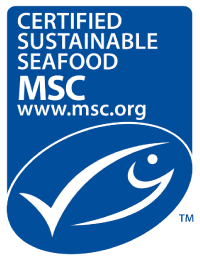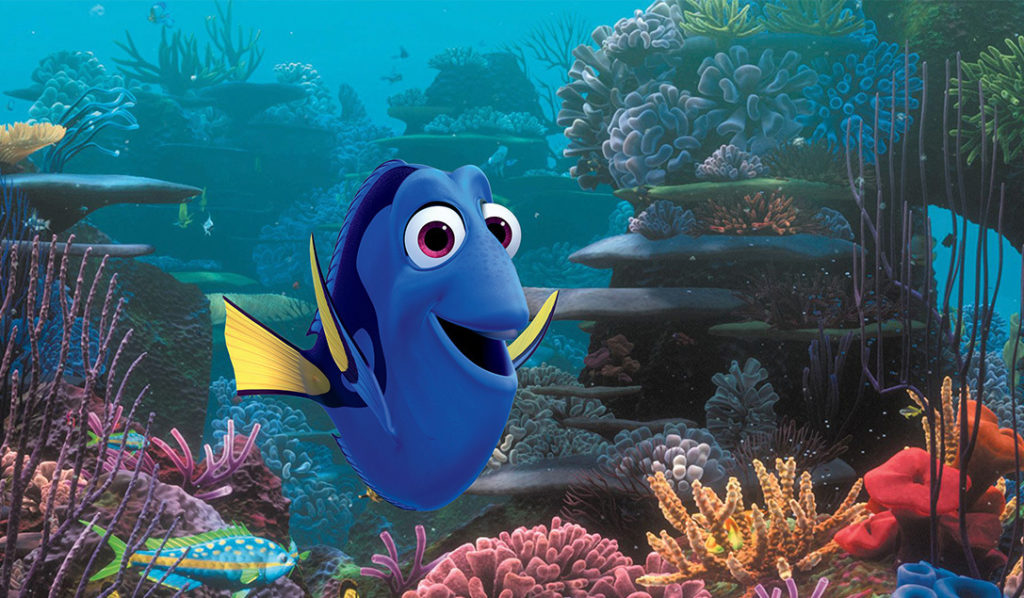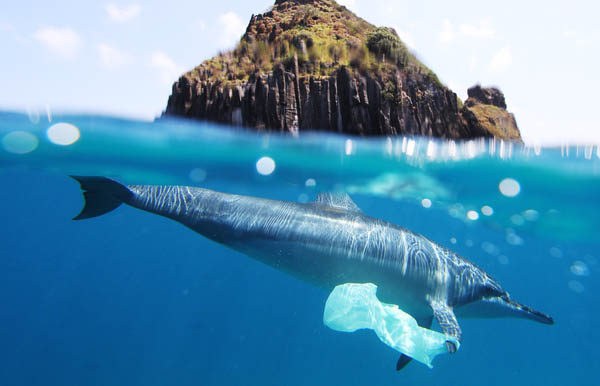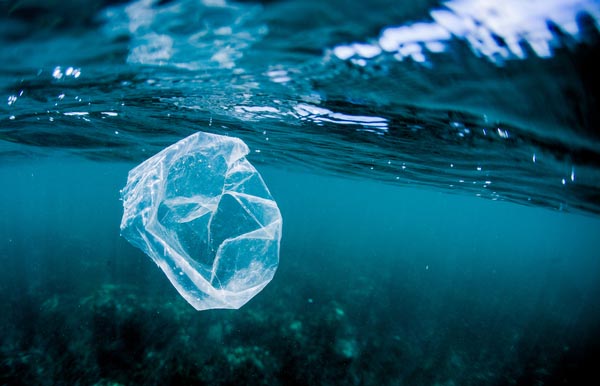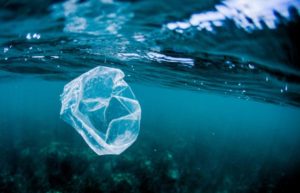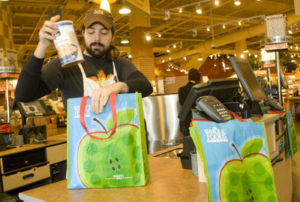In the new animated Disney movie “Finding Dory,” the adorable little blue tang voiced by Ellen DeGeneres accidentally sleep-swims her way out into the open ocean, gets trapped in a plastic six-pack ring, and ends up captured.
Dory turns out ok. Her panicked family eventually finds her, and they go back to swimming through forests of kelp, over gorgeous coral reefs, and around all kinds of other fish, urchins, octopi, sea otters and more.
But here’s the spoiler alert: The movie is a cartoon, but the oceans it depicts are not, especially when it comes to plastic pollution. In fact, by 2050, Dory’s fate could be far worse than what’s depicted in the film. That’s because:
in less than 35 years, scientists predict that
there will be more plastic in the sea than fish when measured by weight.
All good movies have a hero, and fortunately, our real-life movie about ocean pollution does, too. It’s the Love the Ocean campaign, a joint initiative of the National Geographic Society’s Pristine Seas Project and DAVIDOFF Cool Water, a fragrance for men whose sales help protect marine environments across the globe. They’re sponsoring this post so you can pitch in and not just love the oceans, but help save them, too.
Why Bother?
Don’t think the oceans are worth protecting? Here are 6 mind-boggling facts that will change your mind in less time than it takes you to make a tuna fish sandwich.
Stop Trashing the Oceans.
6 Mind-Boggling Reasons Why.
1) 71% of the “earth” is covered by the ocean. The oceans are why the world exists as we know it. No oceans? No us.
2) Over 50% of the oxygen we breathe is produced by our oceans. Don’t like the idea of suffocating? Keep the oceans alive.
3) A shocking 11 billion pounds of plastic waste were dumped into the ocean in 2012 alone. That’s just one year. Now multiply that year after year after year. Mind boggling, right?
4) By the year 2050, the oceans will contain more plastic than fish when measured by weight. Yes, I said this already. I’m repeating it so you will, as well. Because that’s what you need to do with mind-boggling facts. Tell everyone you know so their mind will get boggled, too – right before they take action.
5) 90% of the world’s fisheries are either overexploited or fully fished out. That means that the fish that used to be there pretty much aren’t any more.
6) 47% of edible seafood is wasted each year in the United States alone. It’s like taking that nice piece of grilled salmon on your plate, cutting it in half, and throwing it away. Just. Like. That.
What Can You Do to Save Dory and Stop Trashing the Oceans? Go Plastic-Free.
At the Love the Ocean website, spokesperson and hunky actor/model Scott Eastwood (yes, THAT Eastwood) says, “We can’t ignore the importance of protecting the world’s oceans.”
“As individuals, we have more power to change the world than we think.”
You can watch his short and compelling video right here:
Eastwood also encourages folks like you and me to go plastic-free. Here’s how:
- Stop using so much plastic, especially plastic bags.
- Encourage your local government to introduce legislation supporting a plastic bag ban, or ask consumers to pay a small fee to use plastic bags rather than their own reusables.
- Take the Plastic Free Challenge. Avoid single-use plastic as long as you can – a day, a week, a month, longer? (Beth Terry at My Plastic Free Life can show you exactly how to live very happily without plastic.)
- Use your social networks. Encourage friends, family, neighbors, co-workers and your community online to kick the plastic habit, too.
- Join a clean up. DAVIDOFF is organizing beach clean-ups in the United States, United Kingdom and Germany to get people involved. But don’t wait for them to pitch in. Your local environmental organization and coastal protection group probably already has clean-ups in the works. If not, help them get one going.
